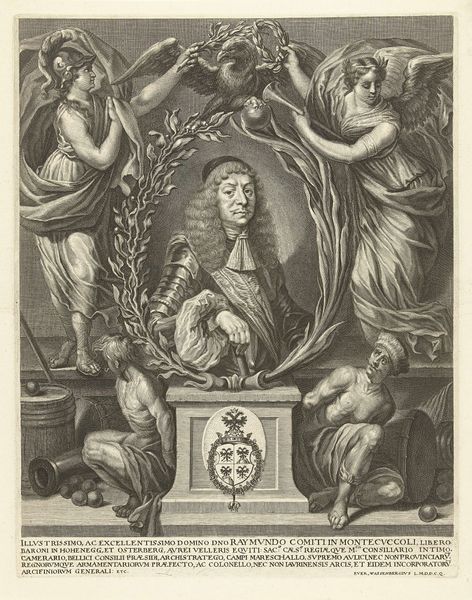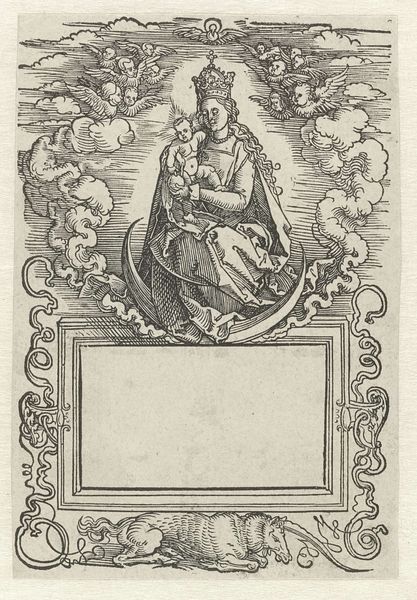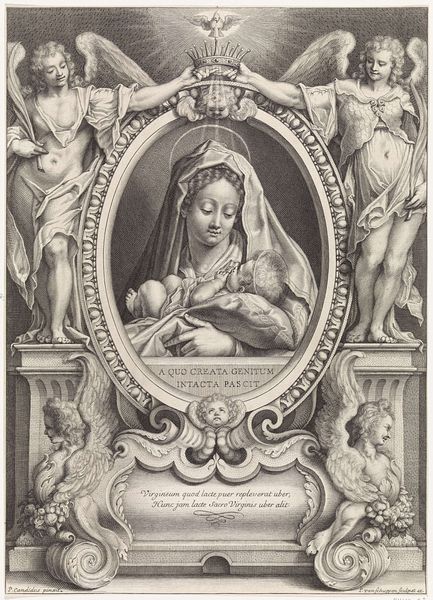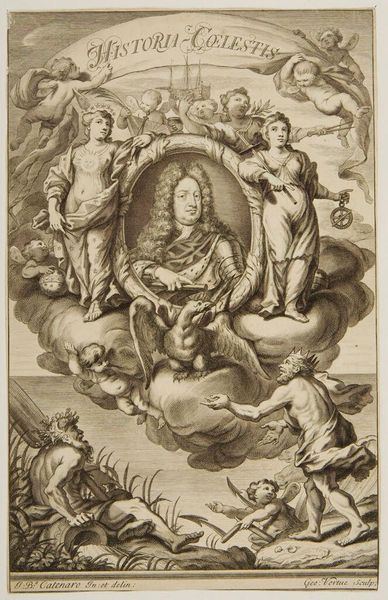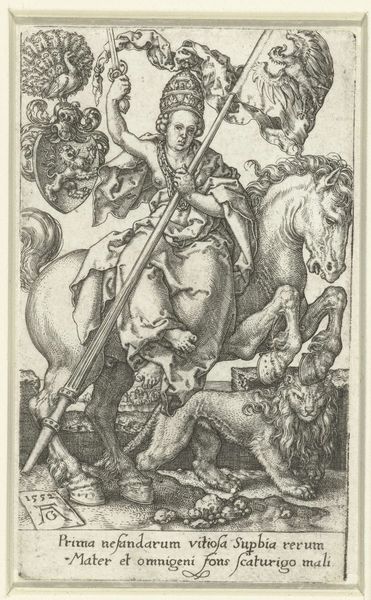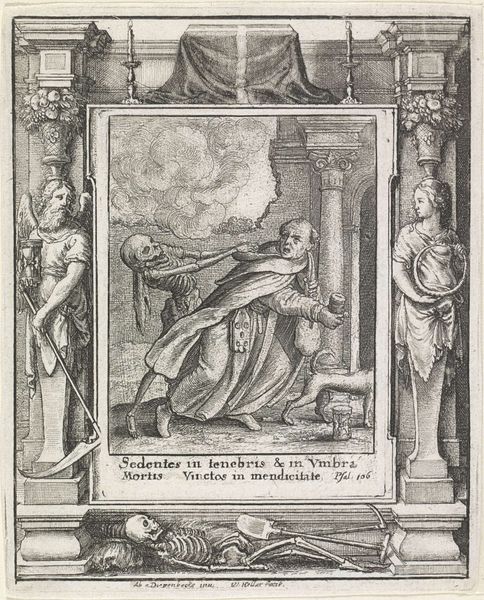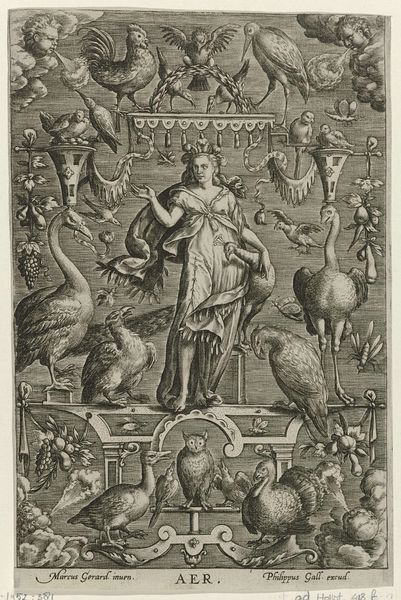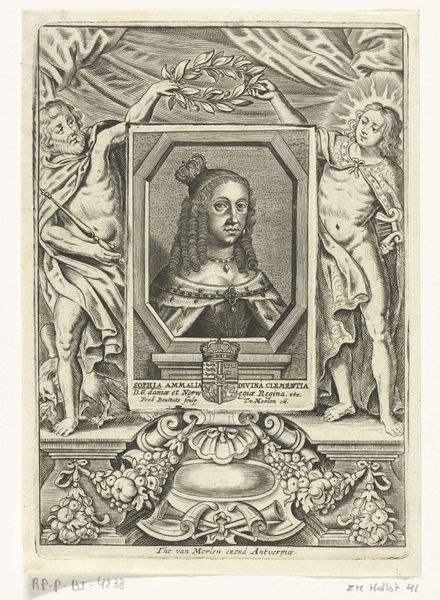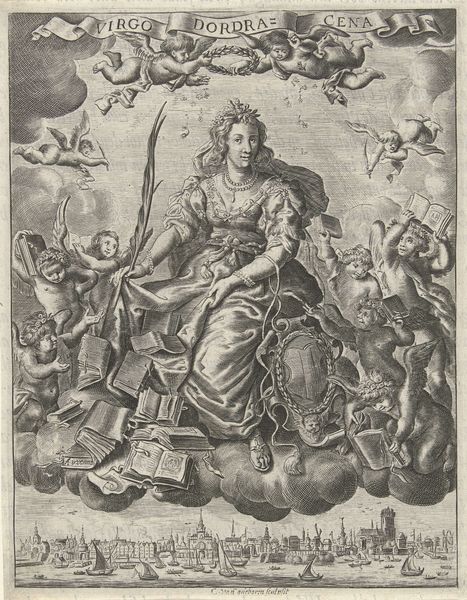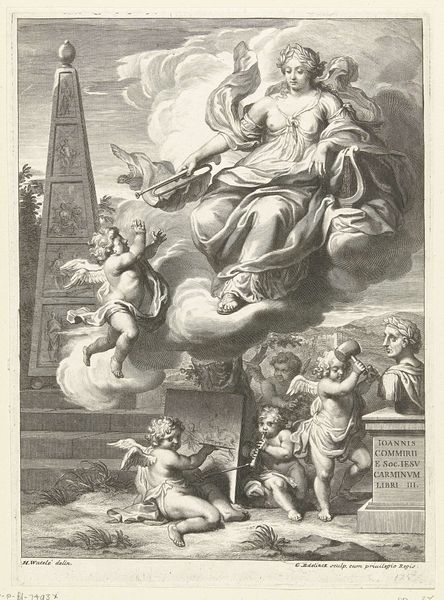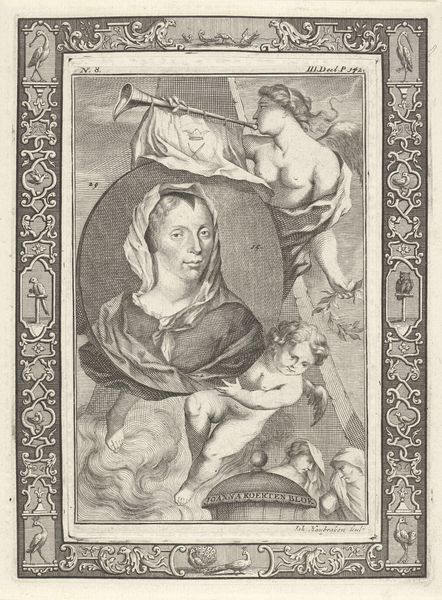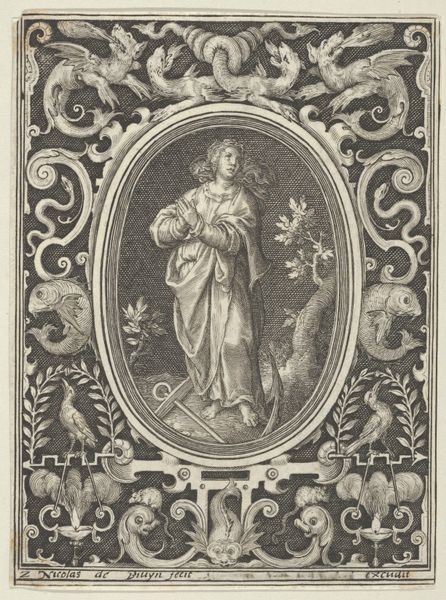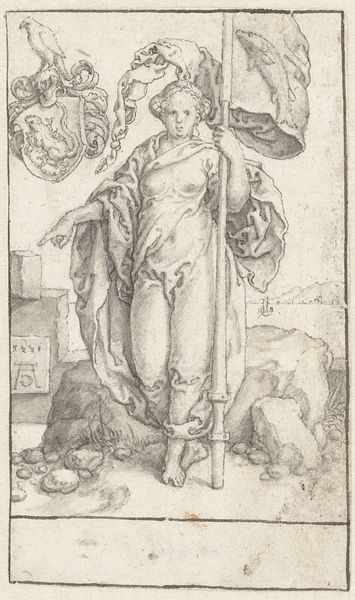
print, engraving
#
portrait
#
allegory
#
baroque
# print
#
figuration
#
line
#
history-painting
#
engraving
Dimensions: height 200 mm, width 137 mm
Copyright: Rijks Museum: Open Domain
Editor: This is Cornelis Galle I’s “Portrait of Isabella Clara Eugenia, Infanta of Spain,” created before 1634. It’s an engraving, and it’s full of symbolic imagery surrounding Isabella’s portrait. It has quite a formal, almost staged quality. How do you interpret this staging, considering its historical context? Curator: That's a keen observation! The formal staging speaks volumes about the political role of portraiture at the time. Prints like these circulated widely and served to solidify Isabella’s image and power. What strikes you about the objects surrounding her portrait? Editor: Well, there are snakes, cherubs, a dove...it feels like a combination of power and virtue, but I am unsure how they come together? Curator: Precisely! The snakes are complex symbols. They might allude to the challenges and enemies she faced as a ruler. However, when coupled with cherubs and objects such as the dove or a cornucopia, it speaks of Isabella’s hoped for successes of prosperity, peace, and pious rulership in the region. Knowing that she governed the Spanish Netherlands during a period of intense conflict, how might this image have functioned? Editor: As a sort of propaganda? Reinforcing her legitimacy despite the ongoing political instability? Curator: Exactly. The image isn’t just a likeness; it’s a carefully constructed statement intended for a broad audience. It is an object with intent within a complex web of political and religious narratives. What does studying this work teach us about the function of art beyond aesthetics? Editor: That art is never truly separate from its political and social reality! Images have lives beyond their creation; I see that more clearly now. Curator: Absolutely. And that is part of their ongoing power.
Comments
No comments
Be the first to comment and join the conversation on the ultimate creative platform.
